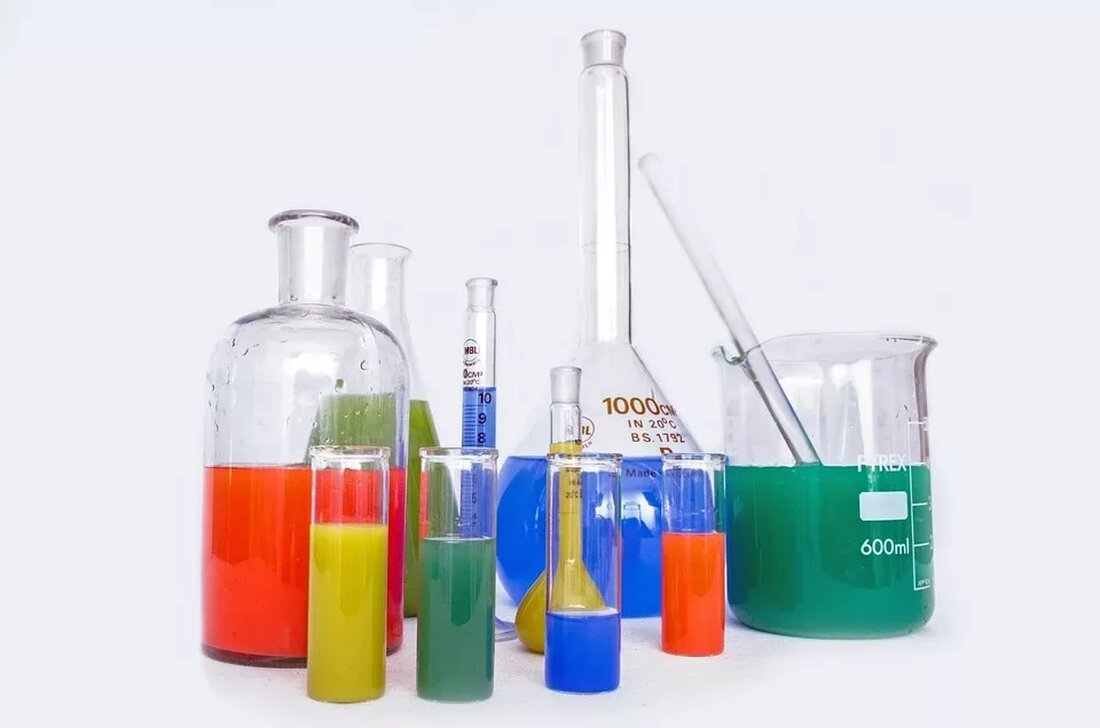The chemistry of medicinal plants
The chemistry of medicinal plants have always played an important role in traditional medicine. They contain a variety of chemical compounds that are responsible for their medical properties. In this article we will deal more closely with the chemistry of medicinal plants and take a look at some of the key connections. Phytochemicals The chemical compounds in medicinal plants that are responsible for their effectiveness are called phytochemicals. Phytochemicals are natural connections that occur in plants and have different biological functions. They can be found in different concentrations and combinations in different plant parts such as roots, leaves, flowers and fruits. The phytochemicals ...

The chemistry of medicinal plants
The chemistry of medicinal plants
Medicinal plants have always played an important role in traditional medicine. They contain a variety of chemical compounds that are responsible for their medicinal properties. In this article, we'll take a closer look at the chemistry of medicinal plants and take a look at some of the key compounds.
Phytochemicals
The chemical compounds in medicinal plants that are responsible for their effectiveness are referred to as phytochemicals. Phytochemicals are natural connections that occur in plants and have different biological functions. They can be found in different concentrations and combinations in different plant parts such as roots, leaves, flowers and fruits.
The phytochemicals can be divided into different categories according to their chemical structure. Some of the most important categories are:
1.Flavonoid: Flavonoids are a group of phytochemicals known for their antioxidant and anti -inflammatory properties. They occur in a variety of plants and are responsible for coloring flowers. Quercetin, kaempferol and rutin are important representatives of this group.
2.Terpenes: Terpenes are compounds found in many essential oils and are responsible for the characteristic smell and taste of many medicinal plants. They also have antimicrobial and anti-inflammatory effects. The well-known representatives include limonene, menthol and camphor.
3.Alkaloid: Alkaloids are nitrogen-containing compounds that often have potent pharmacological activity. They can have an analgesic, antispasmodic or hallucinogenic effect. Examples of alkaloids include morphine, nicotine and caffeine.
4.Phenolic acids: Phenolic acids are compounds that have strong antioxidant effects and also have anti-inflammatory properties. They are found in many medicinal plants and are, among other things, responsible for the bitterness of some plants. Important phenolic acids include caffeic acid, rosmarinic acid and salicylic acid.
Each medicinal plant can contain a unique combination of phytochemicals that are responsible for its specific properties.
Analysis of medicinal plants
Various analytical techniques are used to analyze the chemical compounds in medicinal plants. An important method is chromatography, which allows the different compounds in the plant to be separated and identified.
The most common form of chromatography is liquid chromatography (HPLC), in which a liquid sample flows through a column with a stationary phase. The different connections in the sample are separated with the stationary phase due to their different interactions. By combining the HPLC with mass spectrometry (HPLC-MS), the individual connections can be additionally identified.
Another method for analyzing medicinal plants is gas chromatography (GC), in which the sample is transferred to a gaseous state and then led by a column. The different compounds in the sample evaporate at different temperatures and are separated with the stationary phase due to their different interactions. The combination of the GC with mass spectrometry (GC-MS) enables the identification of the individual compounds.
By analyzing medicinal plants, scientists can identify and quantify the chemical components to gain a better understanding of the active ingredients and their concentrations.
Medical applications
The chemical compounds in medicinal plants have different medical applications. Some medicinal plants can be used as natural pain relievers because they contain connections that have a pain -relieving effect. Others have antimicrobial properties and can be used to treat infections.
A well-known example is the Echinacea plant, which is often used to strengthen the immune system. Echinacea contains various phytochemicals such as alkamides and polysaccharides, which may have an immune-stimulating effect.
Another example is the St. John's wort plant that is used to treat light to moderate depression. St. John's wort contains hyperforin and hypericin, compounds that can have a mood -enhancing effect.
It is important to note that medicinal plants are not equally effective or safe for everyone. The concentrations and combinations of the active ingredients can vary from plant to plant, and interactions with other medication can occur. It is therefore advisable to consult with a doctor or pharmacist before using medicinal plants.
Conclusion
Medicinal plants contain a variety of chemical compounds that are responsible for their medicinal properties. The phytochemicals in medicinal plants, such as flavonoids, terpenes, alkaloids and phenolic acids, can have various pharmacological effects.
Analyzing medicinal plants using chromatography techniques allows scientists to identify and quantify the chemical components. This allows them to gain a better understanding of the active ingredients and their concentrations.
The chemical compounds in medicinal plants have medical applications and can be used to treat pain, infections and other diseases. However, it is important to consider individuality and to consult a specialist before use.
The chemistry of medicinal plants is a fascinating area that offers a variety of research opportunities. Through further examinations, we can gain a better understanding of the bioactive connections in medicinal plants and further research their potential in medicine.
Sources:
1. Chen, Y.J., Li, S.L. (2016). Analysis of Medicinal Plants by Chromatography. Current Chromatography, 3(1), 37-57.
2. Pergolizzi, J.V., Raffa, R.B., Taylor, R. Jr., Patel, H.V. (2012). Phytochemicals as Pain Management: A Review. Pain and Therapy, 1 (1), 1-21.
3. Sarker, S.D., Latif, Z, Gray, A.I. (2006). Natural Products Isolation (Methods in Biotechnology). New Jersey: Humana Press.
4. Schwager, J., Richard, N., Fowler, A., Seifert, N., Raederstorff, D. (2014). Carnosol and Related Substances Modulate Chemokines and Cytokine Production in Macrophages and Chondrocytes. Molecules, 19(11), 18429-18453.

 Suche
Suche
 Mein Konto
Mein Konto
